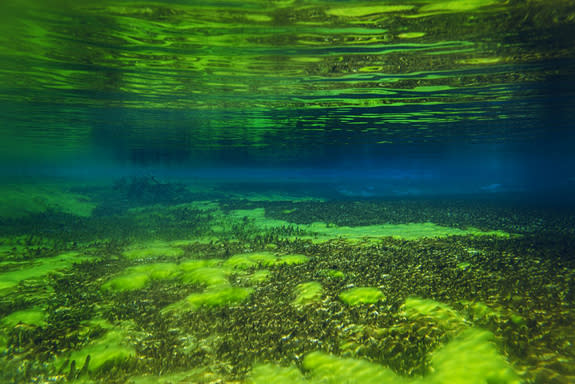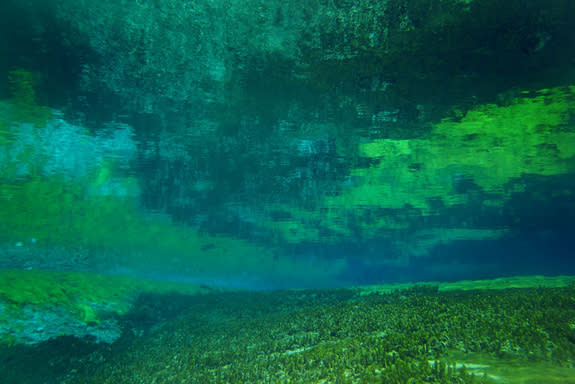World's Clearest Lake Yields Stunning Photos
It's not every day that you get to take underwater photos in the clearest lake on Earth, in which nobody has before been allowed to dive. But that's just the chance that photographer Klaus Thymann got in February on a trip to Blue Lake on New Zealand's South Island.
After getting approval from the government and the native Maori people, who consider the lake a sacred site, Thymann put on a wetsuit and went into the water before snapping away.
"It was an extraordinary visual experience," Thymann told LiveScience's OurAmazingPlanet. "I've never seen anything that clear." [Photos: the Clearest Lake on Earth]
Visibility in the lake stretches up to nearly 260 feet (80 meters), according to Robert Merrilees, a hydrologist with the New Zealand National Institute of Water and Atmospheric Research. That makes it the clearest lake in the world, Merrilees said in an interview with Thymann. This is essentially the same visibility as that of distilled water, 100 percent pure water that has had all impurities removed, Merrilees said.
The lake's water originates in another glacial lake above it, called Constance Lake. Both are found just next to Mount Franklin, in the Tasman District's Nelson Lakes National Park. That body of water is fed by glacial melt and is above the treeline. Constance's water is then filtered through rocks and runs into Blue Lake, although it only stays there for about 24 hours before draining into a river, Thymann said. That accounts for its exceptional clarity, he said — much of the water's scant impurities are removed by the rocks, and it doesn't stay long enough in Blue Lake to accumulate sediment and other materials that might cloud it.
Thymann said the colors were stunning and appeared the same as they did in the photographs. One of the most mesmerizing aspects of the experience was that the lake's bright colors reflect off the lake's surface, visible from within the lake, he said.
Thymann runs a group called Project Pressure, a nonprofit group set up to catalog photographs of glaciers around the world. The purpose is to both capture these glaciers before they disappear, and to raise awareness about the reality of climate change, he said.
"In a couple of decades, photography is all that's going to be left of a lot of [these] glaciers," he said. "I think it's important to have a visual legacy of what the world looks like."
Email Douglas Main or follow him on Twitter or Google+. Follow us @OAPlanet, Facebook or Google+. Original article on LiveScience's OurAmazingPlanet.
Copyright 2013 LiveScience, a TechMediaNetwork company. All rights reserved. This material may not be published, broadcast, rewritten or redistributed.




